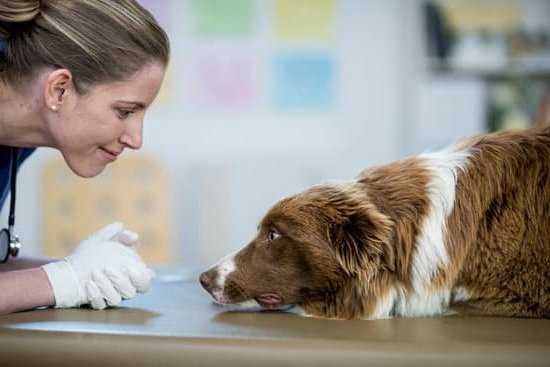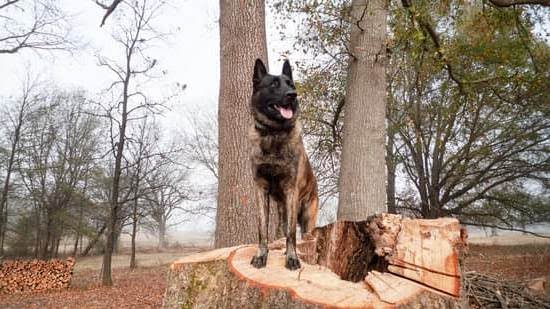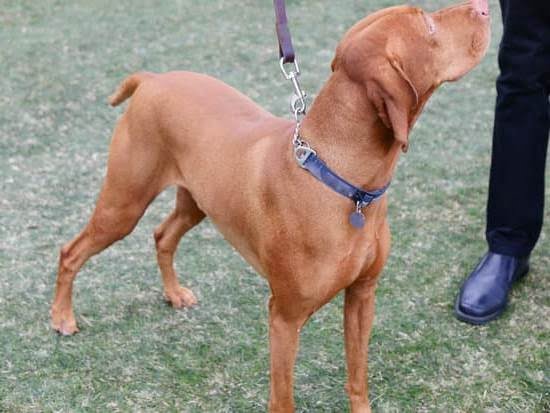Introduction
Becoming a K9 police dog trainer can be a rewarding and unique experience. An in-service K9 police dog trainer is someone who already has experience working with K9 units in the field and provides specialized training to police dogs on a daily basis. This type of training focuses on refining the skills that have already been taught as well as introducing new skills and tactics specific to the unit that the dog will be working with in the future. On the other hand, an entry level K9 police dog trainer has usually recently completed their specialized education for becoming a canine law enforcement trainer, and is now responsible for teaching puppies or untrained adult dogs all of the necessary skills that they will need to identify suspects, track scents, apprehend targets, detect explosives and drugs, search buildings, enforce commands, and more. As such, entry level trainers must have a complete understanding of canine anatomy and behavior before they can effectively teach what is required by law enforcement programs.
Defining the Role of a K9 Police Dog Trainer
A K9 police dog trainer plays a critical role in the effective use of K9 units in law enforcement. Trainers are responsible for teaching the dogs proper behaviors and commands to be used by their handlers in real-world scenarios. This includes teaching the dogs to track and apprehend suspects, detect hidden objects such as drugs or bombs, and search for missing persons.
K9 police dog trainers will also help handlers learn how to properly care for their canine partners and ensure that all daily maintenance and training standards are being met. Additionally, police dog trainers may advise handlers on safety protocols during pursuit scenarios or large-scale deployments when multiple units may be involved. They may also play an advisory role when it comes to providing support after a traumatic event that involves a K9 unit.
Common Job Requirements
K9 Police Dog Trainer is a demanding job that requires both physical and mental effort. Physically, the job involves fulfilling daily tasks that require the trainer to be active and engaged. Along with general physical fitness, specific athleticism such as sprints, jumps, and agility are needed to ensure the safety of the dog being trained and those involved in demonstrations or competitions. Mentally, K9 Police Dog Trainer entails engaging in successful communication between humans and canines while providing instruction and guidance that should be tailored to each individual dog. In order to do so, each chosen expert should possess strong problem-solving skills and an ability to understand canine behavior. Furthermore, a thorough understanding of compliance regulations set by government agencies is necessary to ensure ethical standards are met during all forms of training.
Education and Certification
In order to become a K9 police dog trainer, it is important to meet the necessary state and local licensing requirements. Depending on the jurisdiction, individual states may also require licensing or additional certifications. Generally speaking, most K9 trainers need a high school diploma or equivalent, as well as specialized training courses in animal behavior and obedience. These courses are offered both online and in some cases in traditional classrooms.
In addition to education and training, most jurisdictions require candidates for K9 police dog trainers to have prior experience working with animals in their jurisdiction of interest. This experience can come from volunteer programs at local animal shelters or even through paid positions within law enforcement departments. Many people find that obtaining an apprenticeship or externship with qualified individuals already working as police dog trainers is the best way to gain essential hands-on knowledge of this field.
After meeting all of the required license and certification requirements, aspiring trainers must then sit for final exams administered by their agency or organization before officially receiving their K9 trainer license or certification credentials. Every agency has different requirements, but generally exams will include written and practical assessments in safety protocols, breed selection criteria, training techniques, and ethical considerations when handling a service animal. Those who successfully complete all portions of the exam will officially be able to apply their skills as expert K9 police dog trainers for law enforcement departments across the nation.
Acquire the Necessary Experience
To become a K9 police dog trainer, one must acquire the necessary experience through proper training and handling of the police dog. This includes learning the techniques and principles to effectively teach the animal basic obedience, commands, behavior modification and problem solving. The person must also have an understanding of canine anatomy, health care needs, and physiological needs. Having a background in law enforcement and general public safety will be beneficial as well. In addition to this, it is important for the individual to understand how his or her methods can positively contribute to the organization’s overall mission. Properly trained K9 police dogs are essential for any law enforcement operations; from search and rescue missions to criminal investigations. Having knowledge and expertise on their abilities can prove to be invaluable for law enforcement officers in their pursuit of justice.
Making Connections
One way to increase your chances of becoming a K9 police dog trainer is by joining professional organizations that are related to K9 police dog training. Organizations such as the National Association of Professional Canine Handlers, International Working Dog Association, American Working Dog Federation and United Schutzhund Clubs of America have events and seminars specifically tailored to the training and handling of K9s. These events provide invaluable networking opportunities with fellow colleagues who have experience in this field, as well as those who specialize in different aspects of canine traininig and care. Additionally, many often post job opportunities on their websites or forums. Joining such organizations will give you an advantage when applying for jobs in animal services.
Building a Robust Training Program
Becoming a K9 police dog trainer requires a deep knowledge and understanding of canine behavior, health, and psychology. It is important to include in your training program an assessment of the K9’s disposition and an understanding of their individual strengths. During the assessment process you must pay attention to the signal the dog is giving off to determine if they are happy, scared, or excited about certain scenarios. Having an understanding of their personality will help you determine what type of training techniques work best for them.
Once you’ve completed the assessment you can begin developing a robust training program that emphasizes positive reinforcement as well as satisfying rewards. For example, treats can be used as rewards after completion of a task or successful behaviors exhibited during routines. However, it is important to also include motivation when utilizing rewards. If a K9 fails to perform correctly after reward administration, then re-evaluate their current skill set and develop more stimulating tasks with increasing difficulty that motivates the dog to work harder for better rewards.
Utilizing Effective Training Tools
The types of training tools used to enhance a K9 police dog program can vary depending on the type of police dog being trained. In general, some training tools may include verbal commands, training muzzles or harnesses, leashes and at-home courses, along with Clicker Training for the dogs. For obedience based activities, verbal command cues like sit, down, stay and come can be used in a variety of environments to reinforce desired behaviors. For more intensive tasks that require higher levels of physical control and engagement, muzzles and special harnesses designed for canines may be necessary as these pieces of equipment provide more safety for both handler and dog. Leashes are also important tools as they provide length control so handlers can direct their canine partner from a further distance if needed. Different types of scent apparatuses such as target wands or scented cones may also be used to track different odors or targets that a police dog may need to detect in particular scenarios. At-home courses and Clicker Training are other options that have become increasingly popular to train working dogs. Clicker Training is an animal-learning technique involving reward and consequence markers which provides operators with increased access in influencing the behaviors they want from their dogs during different scenarios. All these training tool tips should be discussed thoroughly amongst experienced trainers if you hope to become a successful K9 trainer within your community’s police department force!
Conclusion
Becoming a K9 police dog trainer is an exciting and rewarding opportunity. It requires specialized training, certification, and dedication to the task of training police dogs in protection, search and rescue, tracking and obedience skills. If you are ready to start this journey and work with four-legged furry friends to help protect our communities, reach out to organizations that offer certification programs, read available resources online, or take courses related to animal behavior. For more information on the career path you should take or the requirements for becoming a K9 police dog trainer, visit the International Association of Professional Dog Trainers (IAPDT) website for further guidance.

Welcome to the blog! I am a professional dog trainer and have been working with dogs for many years. In this blog, I will be discussing various topics related to dog training, including tips, tricks, and advice. I hope you find this information helpful and informative. Thanks for reading!





